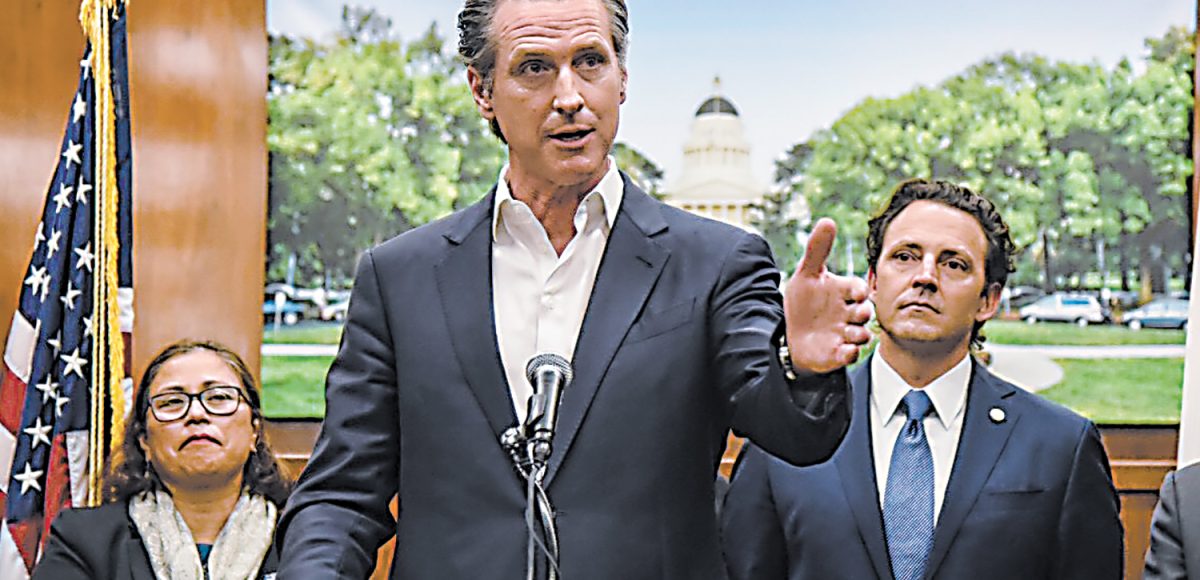With the state facing its most dire surge of COVID-19 hospitalizations and deaths to date, Governor Gavin Newsom announced plans on Dec. 3 for a “regional stay-at-home order” that will be implemented in areas running low on intensive-care unit beds.
“Deep respect, deep empathy for all Californians [in] this very challenging and critical moment,” Newsom said during a press conference. “We have light at the end of the tunnel. This is not a marathon any longer. This is a sprint. We are not asking for any of what we are proposing today to be permanent.”
The order would be triggered when ICU bed availability in a select region falls below 15 percent. Although no region met that criteria as of Thursday, Newsom said the Southern California region could meet it in a matter of days.
Newsom stressed that ICU admissions due to COVID-19 have spiked by 67 percent in recent weeks, in conjunction with a statewide surge in cases that has also seen a disturbing rise in fatalities. He said the state reported just 14 deaths on Nov. 2, but now has had back-to-back days of 113 deaths, with nearly 1,000 fatalities in last four days.
“If we don’t act now, our hospital system will be overwhelmed,” Newsom said.
When triggered, the stay-at-home order will be in place for three weeks and will bar gatherings of people from different households. It will also force the closure of all bars, wineries, personal service businesses, hair salons and barbershops. Schools with waivers will be allowed to remain open, along with “critical infrastructure” and retail stores, which will be limited to 20 percent of capacity. Restaurants will be restricted to takeout and delivery service only.
“We want to diminish the amount of mixing and we really need to send that message broadly, and we need to create less opportunities for the kind of contact and extended period and extended time of contact that occurs in many of these establishments,” Newsom said.
Newsom said the state will also restrict non-essential travel, restricting hotel and motel use to guests traveling for “essential” purposes.
Unlike the state’s four-tiered coronavirus monitoring system, which grades every county individually, the new stay-at-home order will apply more broadly to five “regions” in the state: Southern California, the Bay Area, the greater Sacramento area, Northern California and the San Joaquin Valley.
Newsom again said the state has 11 medical “surge” facilities on standby to open and provide hospital bed space. One of them, the ARCO/Sleep Train Arena in Sacramento, will open Dec. 9, and another is set to open in Imperial County.
Included among the other nine surge centers that could be opened are the Fairview Development Center in Orange County, the Riverside County Fairgrounds, the vacant Sears building in Riverside and Palomar Medical Center in San Diego, Newsom said.
“We will get to that vaccine and we will get back to not only normalcy, but the resiliency and vibrancy that we have come to expect and what we were enjoying before this pandemic for many many years prior to 2020,” said Newsom.







